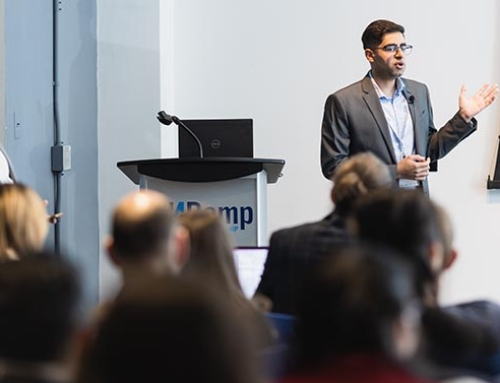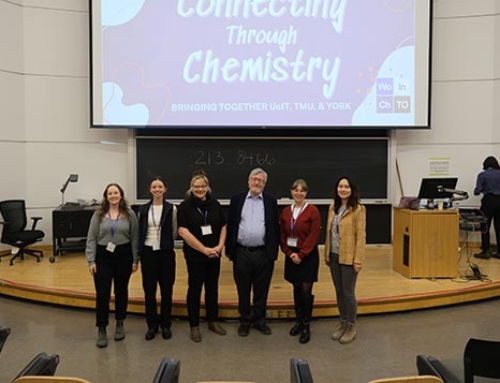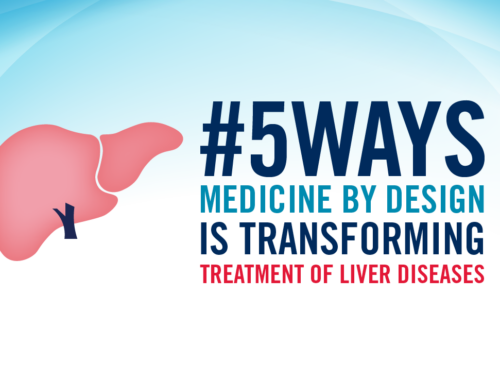Michael Sefton, scientific director at Medicine by Design, addressing the audience at the Medicine by Design symposium on Dec. 8, said in his opening remarks that the theme “Grand Questions in Regenerative Medicine” was inspired by Medicine by Design’s approach to transformative research.
“[Medicine by Design’s] role has been to take risks and ask big questions. The kind of questions that are too grand or too ambitious or too risky to be addressed in a typical three-year or five-year…research project.”
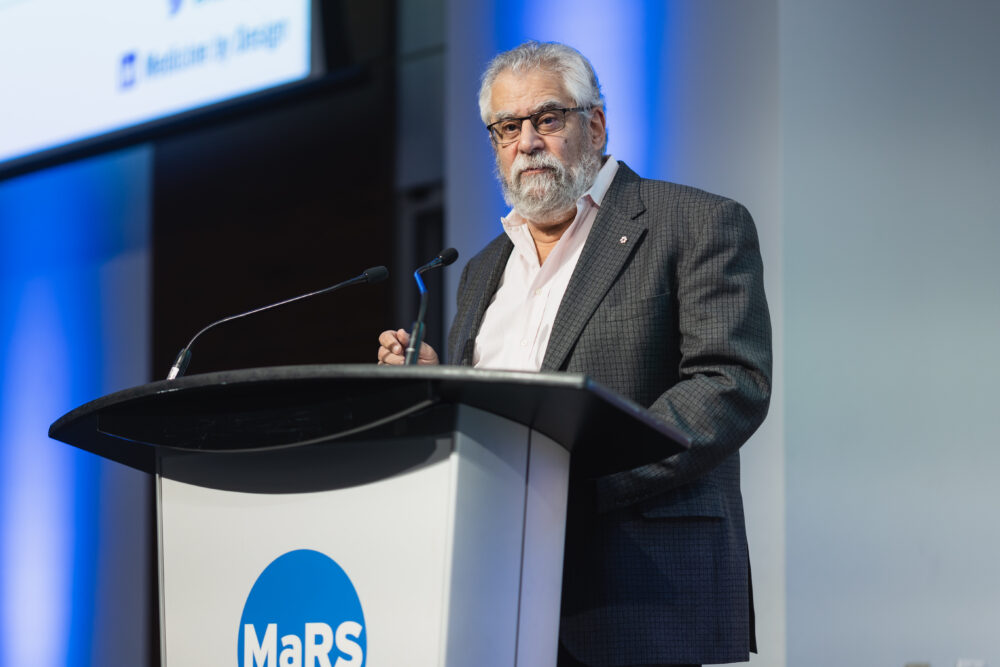
Professor Michael Sefton
Sefton highlighted Medicine by Design’s Grand Questions Program, a $3-million investment into four research teams, which are beginning to address some of the biggest unanswered questions in regenerative medicine.
“We asked [researchers] to think boldly and beyond the current-state-of-the-art,” said Sefton, who welcomed the range of experts giving talks aligned with different grand questions: Can we use synthetic biology to create tissues that outperform nature? What do we learn from physics and new technologies that deconstruct cell identity? How do we translate epigenetics into therapies? And how do we develop cell therapies that are accessible and affordable to all?
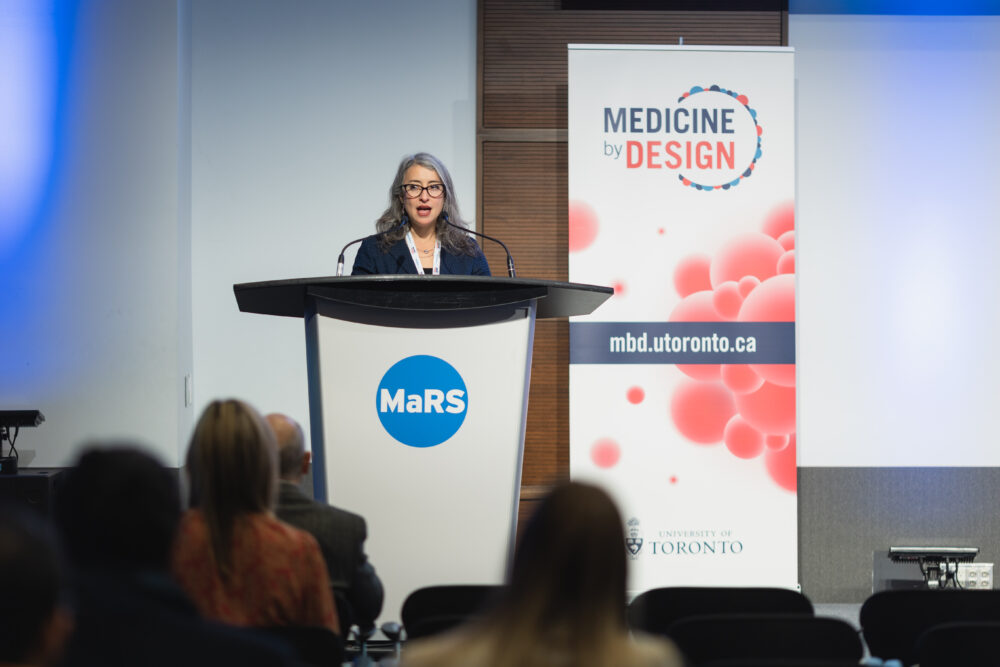
Professor Leah Cowen
Professor Leah Cowen, who is Vice-President, Research and Innovation, and Strategic Initiatives, and Professor, Department of Molecular Genetics, at U of T, recognized Medicine by Design’s 2022 successes in her welcome remarks.
Invited speakers presented on a range of topics including computational biology, stem cell biology and epigenetics
In her talk, Aviv Regev, who is a single cell genomics pioneer, a computational and systems biologist, and head and executive vice president at Genentech Research and Early Development, pointed to two significant medical breakthroughs in the past 40 years, since the company was founded, that have been made possible by next generation technologies.
The first, recombinant DNA, allowed researchers to use DNA segments to develop proteins as drugs, which have proved to be powerful therapies for immune disease, cancer and many more diseases. The second is the use of therapeutic antibodies – sophisticated, life-saving medications that can bind to specific disease-causing targets.
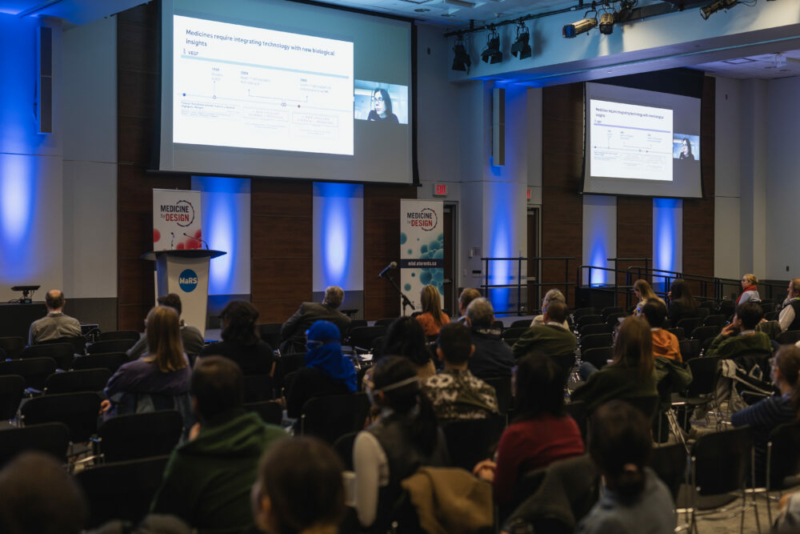
Aviv Regev
The talk, called “Design for Inference in Medicines,” focused on how researchers can integrate computational modelling and experiments to generate the data needed to develop new medicines.
“To really leverage technology to make real medicines it’s not enough to have great techniques; you have to combine it with great biological insights,” she said. “While all of these medicines have brought great benefits, there’s still a lot of unmet need in everything from infectious disease to cancer to neurodegeneration. [Genentech’s] ambition is to try to double the amount of medicines we make and try to do it at a lesser cost to society.”
Regev says achieving that goal can start with human genetics. The field has identified 100,000 regions in the human genome where variants are associated with diseases. The problem, Regev says, is predicting what all these variants do and how they do it – a difficult and laborious process.
This is where advanced technological techniques such as computational biology, machine learning and single cell RNA sequencing can come in, she said, “The question is can we design experiments and algorithms in new ways that would allow us to make better inferences of mechanisms and medicines in patients.”
Much of Regev’s talk focused on the “lab-in-a-loop,” framework that Genentech uses to create a feedback loop, with the data generated in experiments being fed into a computational model, which is constantly refining the experiments.
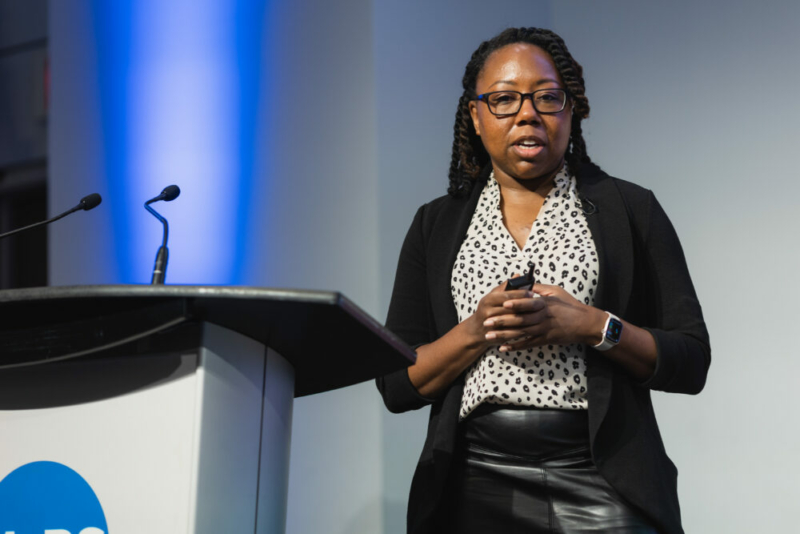
Professor Karmella Haynes
In the session, “Decoding the epigenome,” Karmella Haynes, an assistant professor at the Wallace H. Coulter Department of Biomedical Engineering at Georgia Tech and Emory University in Atlanta, presented on her lab’s work to make a therapy that can trigger tumour suppressors within a cancer cell.
Her work aims to design proteins to activate those tumour suppressing genes and “program [the cells] to stop growing and trigger…cell death.”
The Haynes lab uses gene and protein engineering to create new epigenetic machinery that regulates DNA at will.
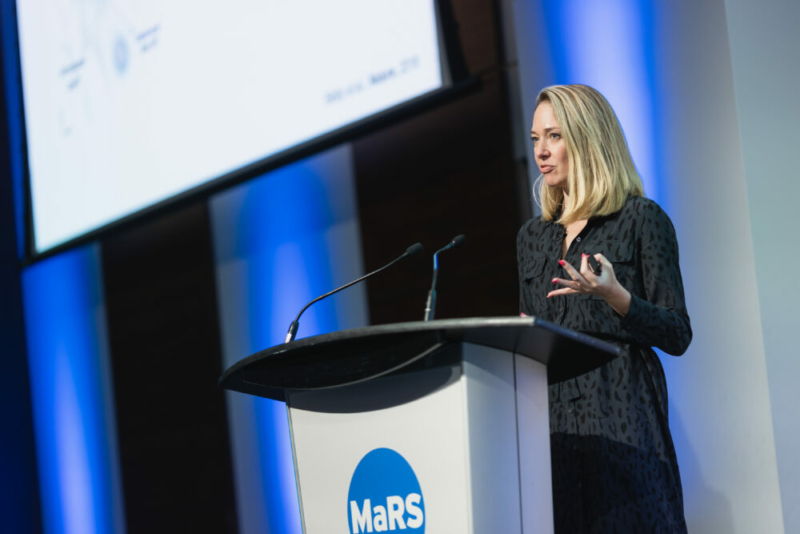
Professor Samantha Morris
Samantha Morris, an associate professor in the Department of Developmental Biology and Genetics at Washington University in St. Louis, said her lab is “deconstructing cell identity by reconstructing it.” She presented on her technology that involves using cell tagging, basically introducing genetic barcode into cells to label them and then incorporating that with single cell analysis to identify the different signals that determine cell identity.
The Morris lab focuses on cell reprogramming and single cell biology, developing new techniques to “understand fundamental rules of cell identity,” she said in the session titled, “Deconstructing cell fate and morphogenesis.”
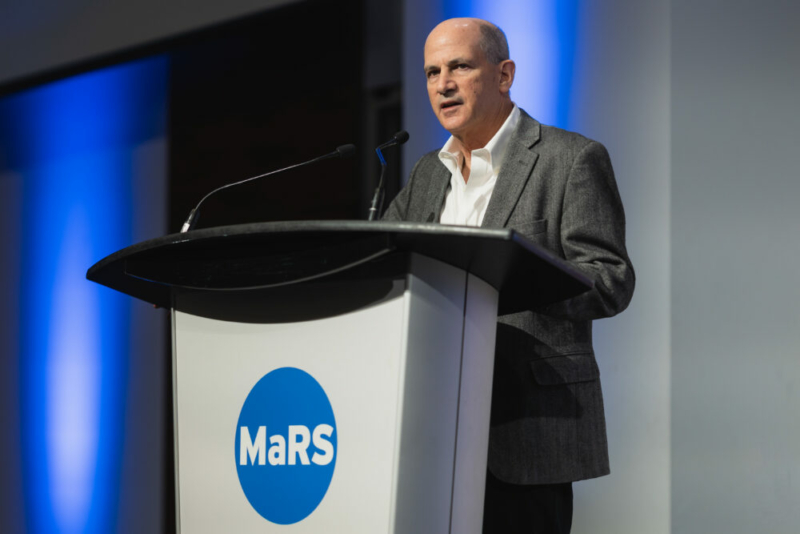
Professor Thomas Rando
Thomas Rando is the director of the Broad Stem Cell Research Center at the University of California Los Angeles, where he is also a professor in the Department of Neurology and Molecular, Cell, and Developmental Biology. He was part of the “Outperforming nature: rejuvenation and synthetic biology” session.
Rando presented his lab’s work on understanding the effects of exercise and diet on stem cell aging. Rando discovered that a gene associated with muscle rejuvenation is stimulated by exercise, but its expression lowers with age. His lab studies the underlying biology of these processes, which could one day inform drug discovery for muscle regeneration in aging.
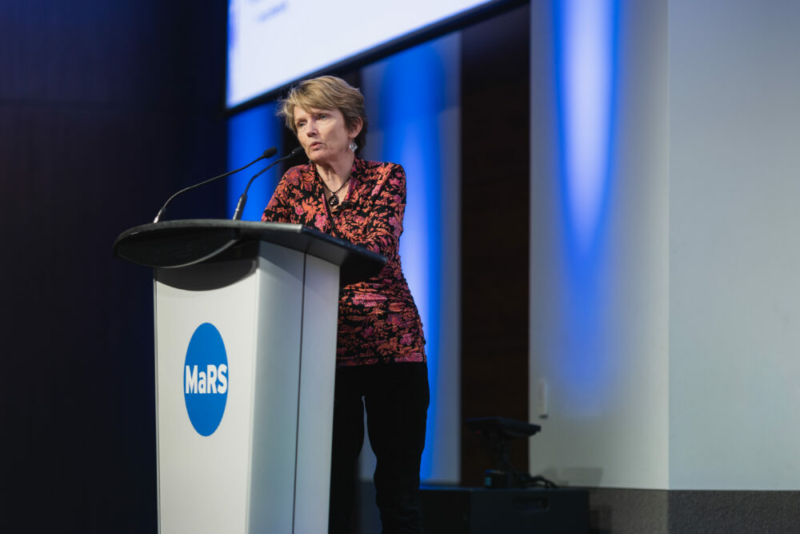
Professor Cliona Rooney
In the “Cell therapies for better outcomes and better access” session, Cliona Rooney presented on her group’s translational work focused on improving immunotherapies for virus-associated diseases and malignancies using immune cells called, “cytotoxic T lymphocytes (CTLs).”
Rooney’s lab, which is at Baylor College of Medicine, aims to create cancer therapies that involve these CTLs. Rooney focuses on designing and engineering these cells – which are provided by a donor – to be furthered enhanced to kill tumours.
When donor cells are used as a therapy, the recipient can experience rejection. Rooney has designed a specific type of CTL that has been shown to be safe and effective and that is also able to mask donor cells, so they are not destroyed by the immune system.
Rooney is a professor in the Departments of Pediatrics, Molecular Virology and Microbiology, and Pathology and is the director of Translational Research Laboratories of the Center for Cell and Gene Therapy in Houston.
Several Medicine by Design-funded speakers presented their research
Left to right:
- Michael Garton, assistant professor, Institute of Biomedical Engineering, U of T, gave a talk called, “How do you solve a problem like ischemia?”
- Penney Gilbert, associate professor, Institute of Biomedical Engineering, U of T, gave a talk called, “Accelerating the identification of skeletal muscle endogenous repair modulators.”
- Kristin Hope, senior scientist, Princess Margaret Cancer Centre, UHN, gave a talk called, “Harnessing post-transcriptional circuitries to advance hematopoietic stem cell-driven regenerative therapies.”
- Sevan Hopyan, senior scientist, Program in Developmental and Stem Cell Biology, and orthopaedic surgeon, The Hospital for Sick Children, gave a talk called, “Emerging biophysical rules of morphogenesis.”
- Mathieu Lupien, senior scientist, Princess Margaret Cancer Centre, UHN, gave a talk called, “Stemness properties are encoded in the chromatin.”
- Alison McGuigan, professor, Department of Chemical Engineering & Applied Chemistry, U of T, gave a talk called, “Recording cell experiences to understand the rules of cellular programming.”
- Keith Pardee, associate professor, Leslie Dan Faculty of Pharmacy, U of T, gave a talk called, “The development of hardware and molecular technologies for improving access to cell therapies.”
Medicine by Design trainees (left to right) Kyle Reid (UHN), Katie Teng (Sinai Health System), Wendy Wang (U of T) and Juan Zhang (Sinai Health System) gave talks at the symposium.
Poster session highlights 40 Medicine by Design-funded trainees
Medicine by Design graduate students, post-doctoral fellows and research and scientific associates presented a cross-section of Medicine by Design-funded research.
Three posters were chosen by judges as the top posters:
- First place was given to Julia Lin with the poster, “T cells expressing choline acetyltransferase contribute to cardiac dysfunction during viral myocarditis.” Lin is a PhD candidate in Slava Epelman’s lab at UHN.
- In second place was Steven Botts with the poster, “Loss of the ETS transcription factor ERG disrupts core vascular programs in aortic endothelial cells and exacerbates plaque development in murine atherosclerosis.” Botts is a PhD candidate at Jason Fish’s lab at UHN.
- Third place went to Lia Huo with the poster, “Sustained release of Sh3-rdCVF to rescue cone photoreceptor death.” Huo is a PhD candidate at Molly Shoichet’s lab at U of T.
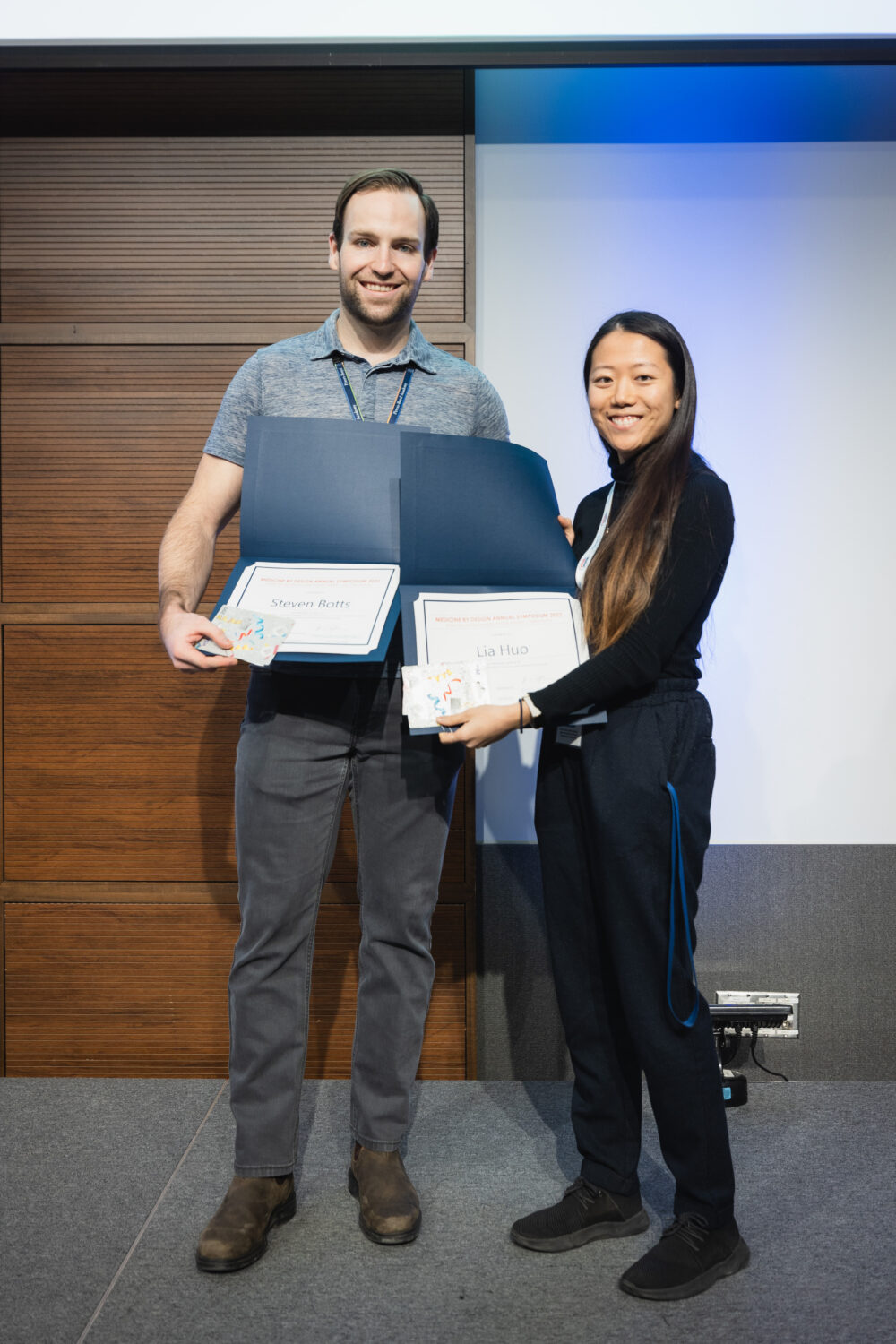
Second place winner Steven Botts and third place winner Lia Huo. First place winner Julia Lin is not pictured.
Hussein Ghazale (above left), a post-doctoral fellow from Carol Schuurman’s lab at Sunnybrook Research Insititute, won the CCRM Therapeutic Translation Award for his poster, “Overcoming neuronal reprogramming barriers as a novel therapeutic strategy for ALS.”
The People’s Choice award, which was voted on by symposium attendees, went to Damra Camat (above right) for the poster “IL-4 promotes viability and regeneration in murine precision-cut liver slices.” Damra is a PhD candidate in Sonya MacParland’s lab at UHN.
































































